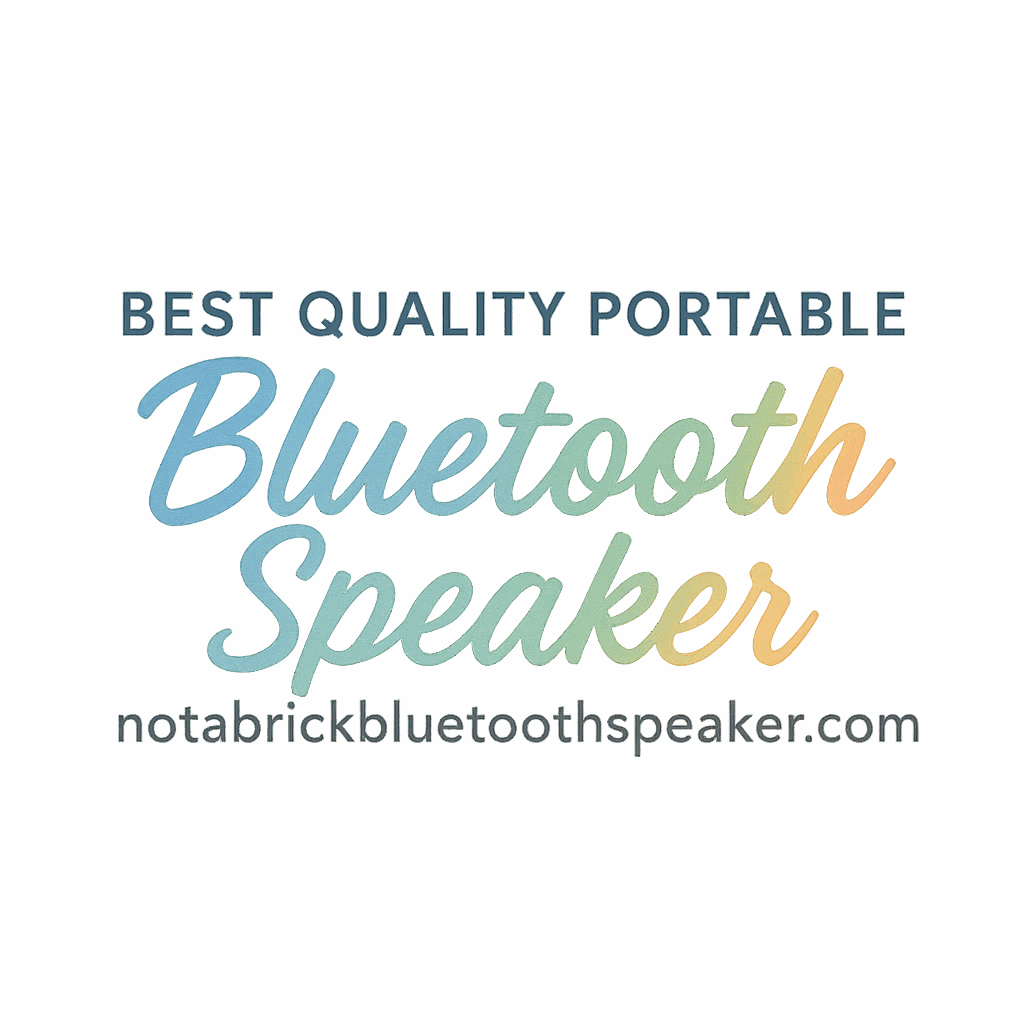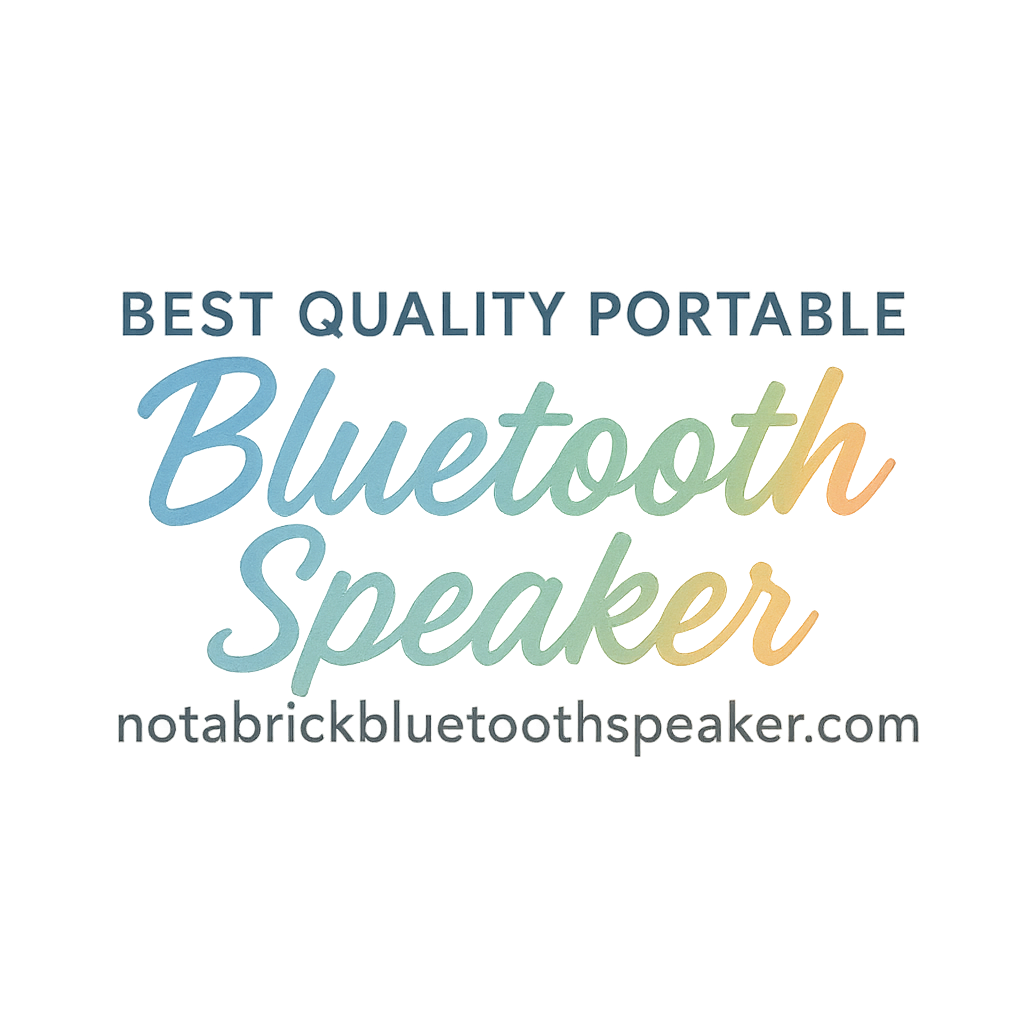Bluetooth speakers are the life of any outdoor gathering, from picnics at the park to weekend beach trips. But while you’re enjoying your favorite playlist under the sun, there are a few safety tips you shouldn’t ignore. From weatherproofing to battery care, outdoor use comes with its own set of rules. Let’s talk about the 9 essential safety tips that can save your device—and maybe even your day.
Why Outdoor Safety Matters for Bluetooth Speaker Users
Why all the fuss about outdoor safety? Simple: nature isn’t exactly tech-friendly. Whether it’s a sudden downpour, curious animals, or accidental tumbles, outdoor settings pose unique risks to your Bluetooth speaker. On top of that, good safety habits ensure your speaker lasts longer, performs better, and keeps delivering high-quality sound whenever you need it.
To get the best out of your gear, be sure to visit our buying guides and maintenance-troubleshooting tips.
1. Choose a Weatherproof Bluetooth Speaker
What Does “Weatherproof” Really Mean?
Weatherproof doesn’t mean indestructible. It usually means the speaker can handle splashes, dust, and the occasional drizzle. This is crucial if you’re using your speaker near pools, at the beach, or on hiking trails.
Ideal IP Ratings to Look For
Look for an IP67 rating or higher. This tells you the speaker is dust-tight and can survive submersion in water for short periods. You can learn more about this in our features & specs section or check out products tagged under Bluetooth Speaker and portable.
2. Keep Your Bluetooth Speaker Dry
Unexpected Rainfall: A Common Threat
You’d be surprised how many people get caught in the rain with an unprotected speaker. Water can fry internal circuits or cause battery issues over time.
Simple Water-Protection Hacks
Use a waterproof sleeve or a simple plastic baggie. For beach days, keep it in a shaded area away from splash zones. You can even place silica gel packets in the case to absorb moisture—an old-school trick that still works wonders.
Explore more care and maintenance tips to prolong your speaker’s life.
3. Avoid Overheating in Direct Sunlight
Can the Sun Damage Your Speaker?
Yes! Prolonged sun exposure can damage the battery, fade the outer shell, and even warp internal components. That sleek matte finish? It might melt or crack if it gets too hot.
Best Placement Practices
Always place your speaker in a shaded area—under a beach umbrella, in your backpack’s side pocket, or beneath a towel. It’s a small step that makes a big difference in performance and longevity.
Need help choosing heat-resistant models? Visit our comparison reviews and long-lasting tags.
4. Secure the Speaker to Avoid Drops or Falls
Accidental Drops Are More Common Than You Think
Outdoor terrain is uneven, and a simple bump can send your speaker flying. That hard ground? Not so friendly to your electronics.
Use Straps, Mounts, or Anti-Slip Mats
Opt for speakers with built-in hooks or buy aftermarket accessories like anti-slip mats and carabiner clips. These prevent costly accidents and give you peace of mind.
See what’s trending in speaker placement and usage tips & tricks.

5. Be Mindful of Wildlife and Pets
Animals May Be Attracted to the Sound or Smell
Curious pets or wild animals may see your speaker as a toy—or worse, a chew toy. The vibration and sound can attract them, especially at night.
Keeping Speakers Out of Reach
Place the speaker on an elevated or enclosed surface. You can also use smell-neutralizing wipes to clean any food residue off your gear.
For more advice, check our usage tag.
6. Watch the Volume to Protect Your Hearing
Outdoor Environments Can Deceive Your Ears
You might think your speaker isn’t loud enough outside, so you crank up the volume. But prolonged exposure to high decibel levels can harm your ears—especially if you’re sitting close.
Know the Safe Listening Levels
Stick to 70-85 decibels. Use your smartphone’s volume-limiting features to help monitor the output. You can explore more sound tips to enhance your audio experience safely.
7. Beware of Battery Safety Risks
Avoid Charging in Wet or Overheated Conditions
Charging outdoors can be risky if the environment is too humid or hot. Overcharging can also degrade battery performance quickly.
Monitor Battery Swelling or Overuse
If your speaker starts heating up unusually or you notice swelling, stop using it immediately. Replace batteries only with official parts. We cover more about this on our troubleshooting page and Bluetooth fix tag.
8. Ensure Secure Bluetooth Connections
Unauthorized Access: Yes, It Can Happen
Believe it or not, someone nearby can hijack your speaker if it’s not protected. Open Bluetooth connections are like open doors—anyone can walk in.
Tips to Strengthen Your Connection
Use pairing codes, keep your speaker in “non-discoverable” mode after pairing, and update your firmware regularly. Our pairing tips and connection tag are great starting points.
9. Pack It Right for Travel and Transport
Use a Hard-Shell Case or Padded Bag
Your speaker might survive a drop, but it won’t love being squished at the bottom of a bag. Use a dedicated case with padding for travel.
Disconnect and Store Cables Properly
Tangled or bent charging cables are a recipe for failure. Coil them neatly and avoid wrapping them too tightly.
Learn more from our buying guide and explore technology innovations in speaker protection.
Recap: Outdoor Use and Common Sense Go Hand-in-Hand
Using your Bluetooth speaker outside is a blast—until it’s not. But with a few smart moves, you can enjoy high-quality sound in the great outdoors without risking your gear or your safety.
So remember: plan ahead, pack right, and stay alert.
For a full range of high-performance options, check out Not A Brick Bluetooth Speaker and dive deeper into our latest audio reviews, performance insights, and more.
Conclusion
Bluetooth speakers are meant to make your outdoor moments better, not stressful. Whether you’re beachside, camping, or just chilling on your porch, keeping safety top of mind helps protect both your speaker and your experience.
Use these 9 tips as a checklist every time you head outdoors. Trust me—your speaker (and your ears) will thank you!
Frequently Asked Questions (FAQs)
1. Can I leave my Bluetooth speaker outside overnight?
Not recommended. Moisture, dew, or unexpected rain can damage internal parts even if it’s weather-resistant.
2. What IP rating should I look for in outdoor speakers?
Aim for at least IP67 for solid dust and water resistance. Higher ratings offer better protection.
3. Can Bluetooth speakers be hacked outdoors?
Yes, especially if they’re in pairing mode. Always use security settings to protect your device.
4. How do I safely clean my speaker after outdoor use?
Use a dry or slightly damp microfiber cloth. Avoid soaking ports or using harsh chemicals.
5. Should I avoid sand when using speakers at the beach?
Absolutely! Sand can clog buttons and ports. Use protective sleeves or cases.
6. Can direct sunlight damage the speaker’s battery?
Yes. Long exposure can cause the battery to overheat, swell, or lose capacity faster.
7. Is it okay to play music at full volume outdoors?
Not for long periods. It may harm your hearing and drain your battery quickly. Keep it around 70–80% volume.


